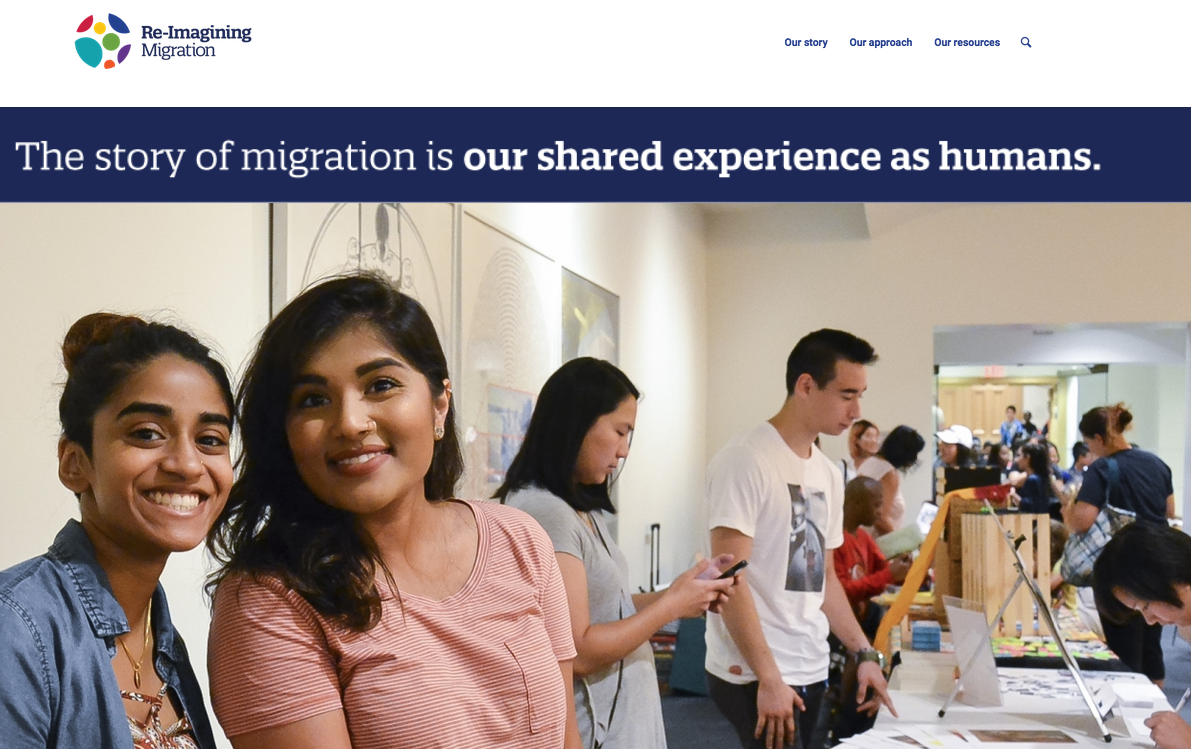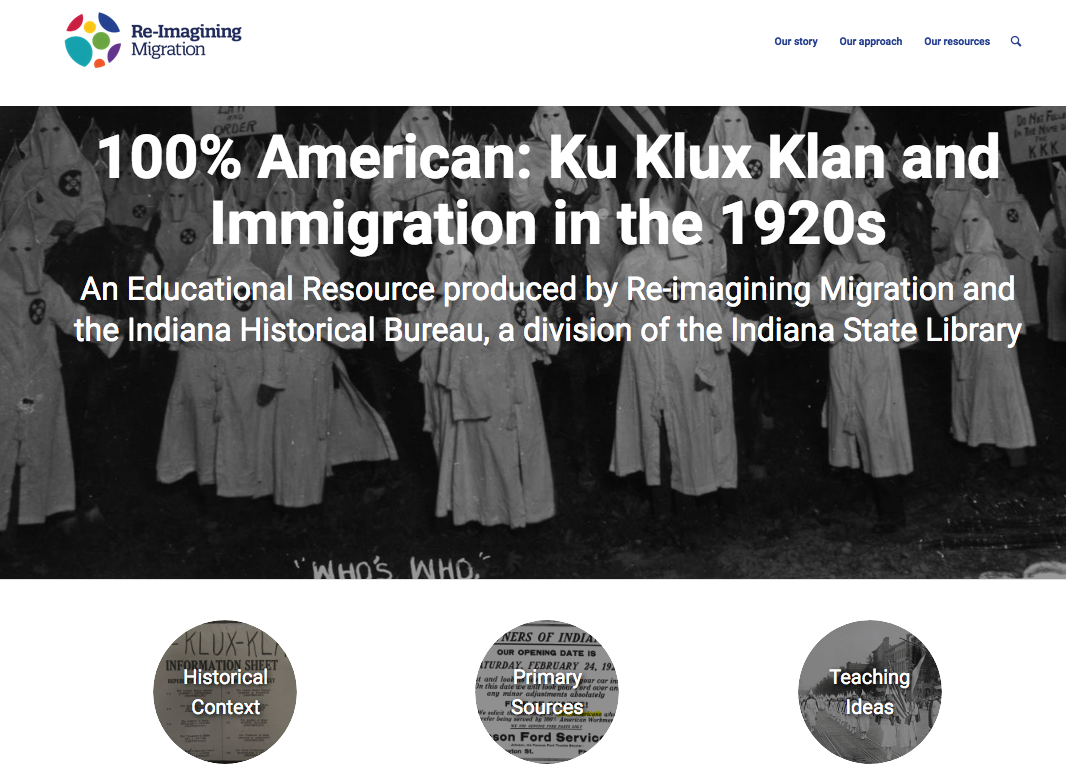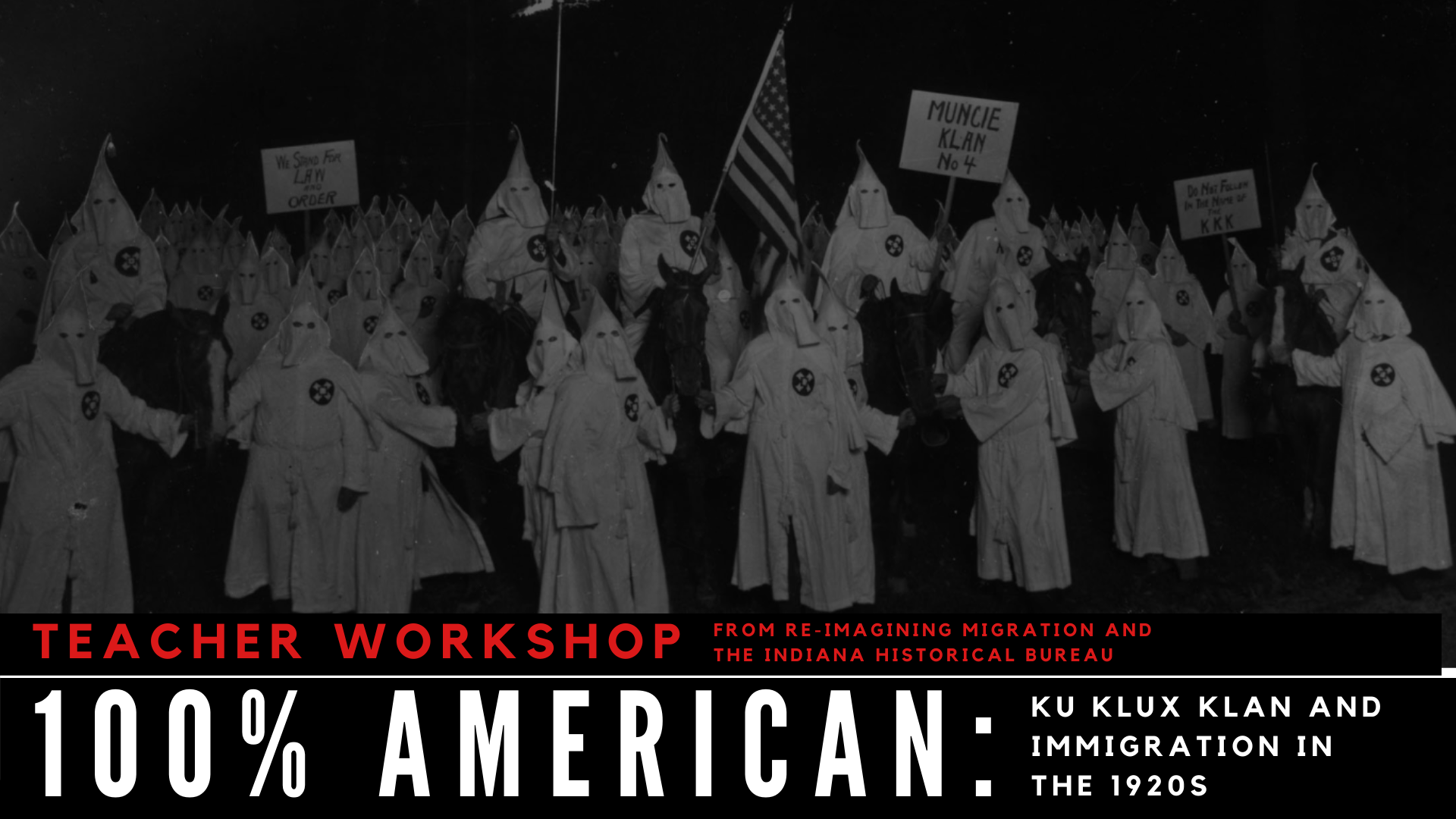
Teachers know that the U.S. history has some dark moments. The making of the republic was a flawed process where immigrants, among others, were marginalized. But history teachers don’t always have the tools to teach this difficult history as many textbooks and curriculum still emphasize a narrative that does not include the contribution of immigrants to the American story. Re-Imagining Migration is attempting to address this gap by teaching migration as a shared human condition and showing students of immigrant origin that they are part of the story of the U.S. The Indiana Historical Bureau (IHB) has partnered with Re-Imagining Migration to supply original historical research and primary sources from Indiana State Library collections to create free virtual lesson plans. We hope these two new classroom resources help teachers guide students through some difficult, but highly relevant, historical events:
Resource 1: One Hundred Percent American: The Ku Klux Klan and Immigration in the 1920s

Resource 2: Save the Children: American Attitudes toward Refugees and the Wagner-Rogers Act

About the 100% American Resource
Xenophobia can sometimes present itself wrapped in the American flag, in the 1920s and today. Through understanding the 1920s Klan as a mainstream, not fringe, organization, students will learn how easily words and propaganda can become actions and official policy – like the 1924 Immigration Act and ensuing quota system. Students can learn to evaluate sources for bias and identify ways that hateful rhetoric can be disguised as patriotism. (Read more from the Historical Context essay).
The 1920s Klan was perhaps strongest in Indiana, where it infiltrated society and politics. Sources show how the hate group spread its message through newspapers, songs, picnics, and parades. And while sources are mainly from the Indiana State Library, the lessons can be applied much more widely. (View the Primary Sources).
About the Save the Children Resource
When people seek refuge from war, genocide, and oppression, who is responsible for helping them? When 300,000 refugees from Nazi persecution sought harbor in the United States in 1939, most Americans turned a blind eye. Others actively opposed new immigrants, while an admirable few worked to tear down the paper walls aimed specifically at excluding Jews. Still others hoped, if nothing else, they could at least save the children through the Wagner Rogers Bill. (Read more from the Historical Context Essay).
The sources include arguments for and against allowing 20,000 Jewish children into the United States. These arguments will help students think about who does and does not get to be an American and who gets to decide. These sources also allow for discussion of how economic arguments have been used to legitimize xenophobic policies such as the quota system. (View the Primary Sources).
Using the Teacher Resources
These resources don’t attempt to impose a curriculum on teachers, but only offer three main tools to bring discussions about immigration into the (virtual) classroom:
1. Historical Context: Each resource has an historical essay, providing the background and context for the topic. This academic essay could be used by the teacher, who then relays the content to younger students, or assigned to older students.
2. Primary Sources: IHB selected a diverse collection of primary sources, including photographs, newspaper articles, political cartoons, pamphlets, song sheets, and more. These sources will help students think about who has been considered a “desirable” immigrant or a “real” American, who has been denied refuge and citizenship rights, and how this has changed in response to demographic shifts and world events.
3. Teaching Ideas: Re-Imagining Migration provides a guide for teaching each topic, including reflection questions and thinking routines. These will help ensure that dialog remains thoughtful and respectful in the classroom. These questions and routines can be paired with each individual primary source or used more generally.
Join Us

Please join us on Wednesday, December 2 for a free webinar exploring the 100% American resource and teaching about patterns of anti-immigration prejudice.
Register at: https://www.eventbrite.com/e/100-american-the-kkk-and-immigration-in-the-1920s-tickets-129022807691
